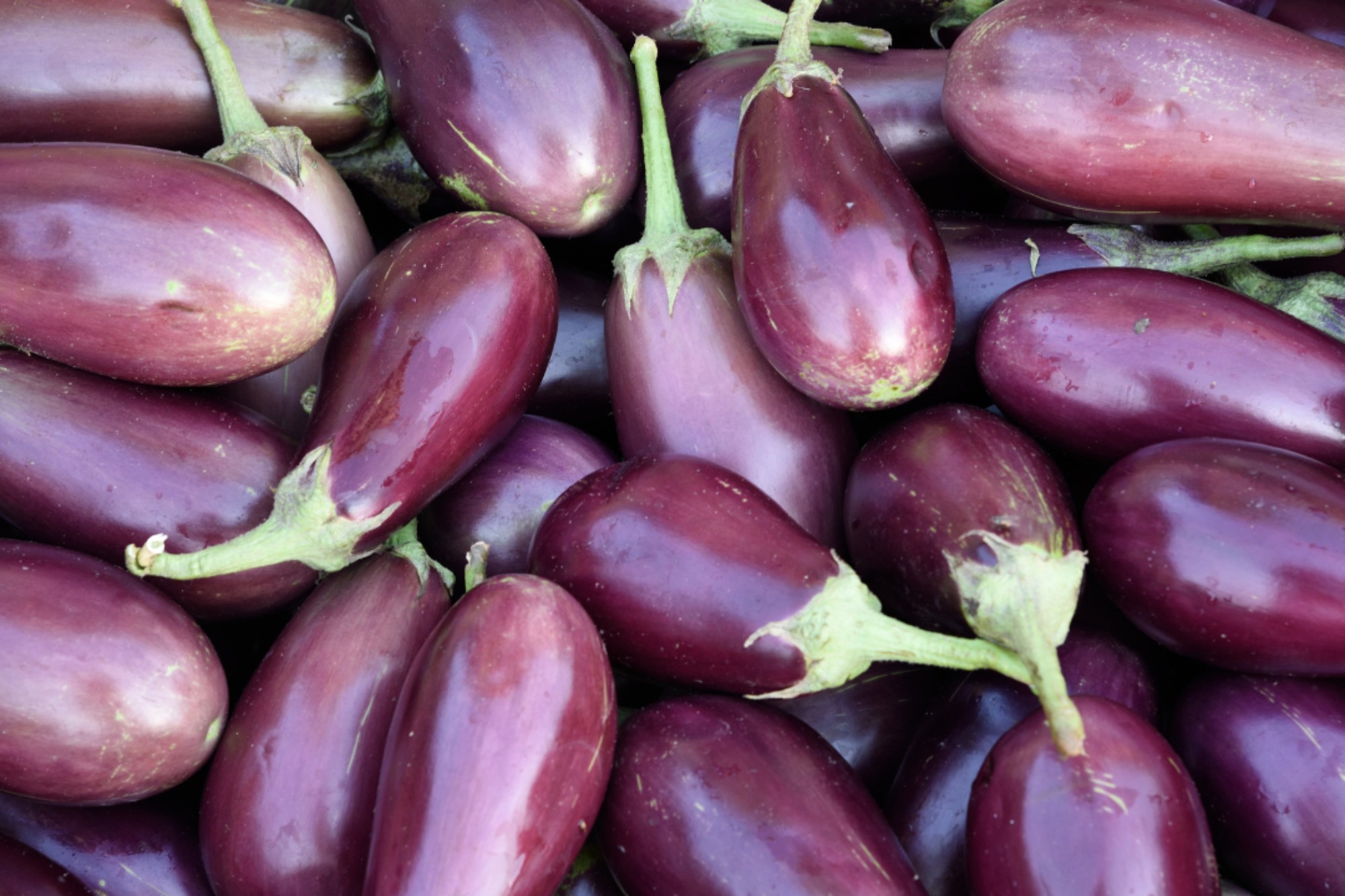Last season we learned about the magic of mushrooms! What wonderful produce do the summer months bring us?
Wandering through a mid-to-late summer NYC farmers market, you’ll likely come across eggplants, the glossy, deep-purple vegetables typically harvested in warm weather. Eggplants are primarily cultivated in tropical and subtropical regions (which explains which nations produce the most eggplant: China, India, Egypt, Turkey, and Iran) (Taher et al., 2017). Want to learn a little more about their history, other fun facts, and get some yummy recipes - read on!
History
Introduced to the United States in the early 1800s by Thomas Jefferson, the third president and an avid gardener, eggplants remained an ornamental curiosity, valued more for their purple, star-shaped flowers, and colorful fruits. It wasn’t until the late 1800s and early 1900s that eggplants made their way into kitchens (Trinklein, 2008). During this period, Chinese and Italian immigrants, with centuries of culinary history involving eggplants, brought them into the American culinary landscape (All-America Selections, 2021).
Agriculture
In 1812 America, you might only find eggplants in President Jefferson’s garden (The Chef's Garden, 2021). However, once its culinary significance was recognized, the desire for widespread eggplant cultivation emerged. According to the National Agricultural Statistics Service, United States Department of Agriculture (2024), 5,807 acres of eggplants were harvested in the U.S. in 2022. As of 2019, New Jersey led eggplant production in the United States, with farmers harvesting 900 or more bushels per day during peak season (Agricultural Marketing Resource Center, 2024). In addition, around 98 percent of eggplants grown in the U.S. are produced for the fresh market, while the remaining portion is used for processed products like frozen entrees, specialty dips, and appetizers (Agricultural Marketing Resource Center, 2024).
Nutrition
In terms of their nutritional value, eggplants are low in calories and rich in vitamins, minerals, and bioactive compounds beneficial to human health (Taher et al., 2017). Research indicates that the phytochemicals in eggplants play a significant role in combating diabetes, hypertension, hyperlipidemia, and obesity (Yarmohammadi et al., 2021). Specifically, phenolic, glycoalkaloids, and carotenoid compounds found in eggplant can manage and prevent diabetes through their antioxidative properties and by inhibiting the activity of α-glucosidase, an enzyme involved in glucose absorption. Additionally, delphinidin, a phenolic compound present in the skin and flesh of eggplants, inhibits angiotensin-converting enzymes, thereby exerting antihypertensive effects on the human body. Moreover, acetylcholine, a vasodilator plentiful in eggplants, can effectively reduce high blood pressure.
Eggplants in the Kitchen
When selecting ripe eggplants at the grocery store or farmers market, gently squeeze the eggplant. If the skin bounces back when you release it, the eggplant is ripe (SeedsNow, n.d.). They can be stored at room temperature, which is typically between 59F and 77F, and away from any ethylene-producing fruits and vegetables like apples or bananas, in the pantry or cupboard during summer, or in the crisper drawer of the fridge (Loh, 2022). Eggplants have a unique taste and texture. When cooked, they become tender and have a slightly sweet, mild, and somewhat earthy flavor. Their texture can be creamy and smooth, especially when roasted or grilled.
Finally, let’s see how people from different cultures incorporate eggplant into their recipes! Here are some you can try.
- A Puerto Rican recipe from one of our Food Ed partners Alliance for a Healthier Generation: https://foodplanner.healthiergeneration.org/recipes/yummy-eggplant-lasagna-rolls/
- A Chinese recipe from Omnivore’s Cookbook: https://omnivorescookbook.com/chinese-eggplant-with-garlic-sauce
- An Italian recipe from Cookie and Kate: https://cookieandkate.com/italian-eggplant-parmesan-recipe/
- A Brazilian recipe from Food Network: https://www.foodnetwork.com/recipes/ina-garten/roasted-eggplant-caponata-recipe-1923178
References
Agricultural Marketing Resource Center. (2024, May). Eggplant. Www.agmrc.org. https://www.agmrc.org/commodities-products/vegetables/eggplants
All-America Selections. (2021, April 15). AAS Winning Eggplants | All-America Selections | Garden. https://all-americaselections.org/aas-winning-eggplants/
National Agricultural Statistics Service, United States Department of Agriculture. (2024). 2022 Census of Agriculture United States Summary and State Data (p. 33). chrome-extension://efaidnbmnnnibpcajpcglclefindmkaj/https://www.nass.usda.gov/Publications/AgCensus/2022/Full_Report/Volume_1,_Chapter_1_US/usv1.pdf
Loh, A. (2022, March 4). How to Store Eggplant. EatingWell. https://www.eatingwell.com/article/7951743/how-to-store-eggplant/
SeedsNow. (n.d.). How To Tell When 🍆 Eggplant Is Ripe. SeedsNow.com. Retrieved June 17, 2024, from https://www.seedsnow.com/blogs/news/how-to-tell-when-an-eggplant-is-ripe-1
Taher, D., Solberg, S. Ø., Prohens, J., Chou, Y., Rakha, M., & Wu, T. (2017). World Vegetable Center Eggplant Collection: Origin, Composition, Seed Dissemination and Utilization in Breeding. Frontiers in Plant Science, 8. https://doi.org/10.3389/fpls.2017.01484
The Chef's Garden. (2021, September 7). The Exceptional Eggplant. Www.chefs-Garden.com. https://www.chefs-garden.com/blog/september-2021/the-exceptional-eggplant
Trinklein, D. (2008, May 1). Year of the Eggplant. Ipm.missouri.edu; University of Missouri. https://ipm.missouri.edu/meg/2008/5/Year-of-the-Eggplant/#:~:text=For%20more%20than%20a%20century
Yarmohammadi, F., Ghasemzadeh Rahbardar, M., & Hosseinzadeh, H. (2021). Effect of eggplant (Solanum melongena) on the metabolic syndrome: A review. Iranian Journal of Basic Medical Sciences, 24(4), 420–427. https://doi.org/10.22038/ijbms.2021.50276.11452
